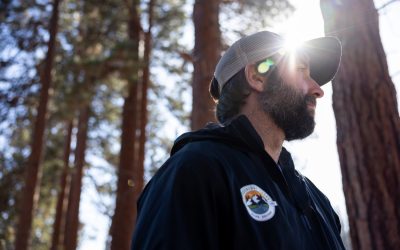Product and Promotion – Develop what you promote and promote what you develop. Are you equipped to create experiences?
There is enormous disruption affecting the destination marketing industry. Over the past six months, the Destination Think team has invested a significant amount of time conducting research on these challenges. Through an extensive series of interviews with more than 50 of the world’s leading destination marketers, we have compiled the most important challenges and the most exciting opportunities that they see for their destinations.
Almost everyone we talked to is struggling to find the right organizational strategy, structure and business model to deal with some major disruptions. We have observed four key observations that impact destination marketing organizations (DMOs) now and in the future. These observations have been grouped under “Four Critical Trends Impacting Destination Marketing Leadership in 2016”:
1. Profit and Planet – A new way of thinking about the supply chain. Can we see problems as solutions?
2. Cost and Revenue – New ideas imply new business models. Can we apply creativity to rethink the way we produce revenue?
3. Product and Promotion – Develop what you promote and promote what you develop. Are you equipped to create experiences?
4. Community and Collaboration – People, not product, are your most important assets. Can you market a destination and attract visitors without engaging residents?
This is a four-part series outlining these trends. In Part 3, we discuss Product and Promotion.
Without a unique story told consistently and by all, a destination and its product becomes a commodity. When a product becomes a commodity, the price is the only battlefield. In 2003, Harvard Business Review wrote: “…the only path to profitable growth may lie in a company’s ability to get its loyal customers to become, in effect, its marketing department.” The DMO leaders that we spoke to on this topic from around the world identified a number of topics that are of growing concern as they plan for the future. These include:
- how consumers are shaping destination marketing through digitalization and democratization
- using new tools and technology to provide measurement and prove a return on investment
- moving from inflated marketing promises towards more honest or modest approaches in order to under-promise and over-deliver
- filling seasonality gaps in visitation
- the role of visitor servicing in an environment where people use technology and are more connected than ever before
- the impact of an always shifting social media landscape and access to dozens of content marketing tactics
- the need for a destination to identify its “inner DNA” in order to brand and market itself effectively
- measuring and managing word-of-mouth communication about your destination
- consumer feedback and evaluation, knowing what to measure and how to use big data’s new measurement tools in order to prove ROI
Consumer perceptions of a destination are now largely shaped by the opinion of others, communicated through the word of mouth from millions of individuals. An experience that’s not talked about might as well be invisible. With ever-increasing competition, consumers seek more authentic experiences. How do you leverage big data to better profile and target prospective travellers? How can a destination marketing organization shift its focus on the visitor experience in order to deliver the right destination experience that creates brand advocacy from visitors and residents alike?
In 2014, Destination Marketing Association International released the DestinationNEXT report, which provided an in-depth assessment of the state of destination marketing. The report’s conclusions focused on three areas of transformation that DMOs will need to address in order to keep pace. These areas are: “Dealing with the New Marketplace” (moving from broadcast to engagement), “Building and Protecting the Destination Brand (becoming destination managers instead of marketers) and “Evolving the DMO Business Model” (collaborating, forging partnerships).
Innovation requires understanding and expertise in addressing all three areas. Consumers today need to be marketed to differently. Promotion has changed from broadcast to engagement, and the landscape has shifted. Inbound marketing, “new” marketing, permission-based marketing, email marketing, social media marketing and content marketing are now all facets of today’s consumer engagement and content marketing efforts. Digital disruptors like social media, mobile devices and accessible information enable DMOs to engage with consumers and stakeholders on a much larger scale.
At the root of the required destination marketing response is the need for a strong, differentiated product that inspires consumers to share stories about their experiences. DMOs no longer own the main narrative of the destination story and this impacts brand management. A destination’s story comes from its DNA, and the DNA is a culmination of those shared experiences. Destinations must find their unique selling propositions. With word-of-mouth referrals now driving consumer decision making, managing the destination experience, sharing the stories that are told and measuring the impact of those stories is vital.
Many destinations are still focused on a one-size-fits-all approach that generates awareness in volume. That doesn’t work in the new marketplace where there are infinite choices for consumers. This broadcasting approach defined success for stakeholders, particularly if the results lead to big numbers. Big numbers are easy to explain to stakeholders. For destinations to truly innovate, they need to engage consumers through a more intimate approach with content that is more relevant. This means developing targeting profiles or marketing segments that go beyond geographic segmentations.
If a DMO can increase the relevance of its marketing efforts to a subset of its audience and drive visitation, the destination will then increase the likelihood of promoting those experiences to like-minded individuals.
Many destinations are making bold headway here. Consider Nashville, USA’s “Music City” brand experience or Tourism and Events Queensland’s ambitious approach to consumer engagement, or Iceland, which has used its residents as a key part of its marketing platform, or Cleveland who took a perceived weakness and turned it into a strength. There’s Destination British Columbia’s success with one-to-one conversations and its Remarkable Experiences program that helps tourism operators identify and develop product. VisitFLORIDA is committed to harnessing advocacy and word of mouth. RT0 4, a region in Ontario, helps its destination through change not by investing its budget to build or boost a regional brand – but instead investing it all in stakeholder engagement and visitor experiences.
We’ve learned that the challenges destination marketers face means that they will likely need to shift to new marketing models that will allow them to define their target audience in the right way, match the right experiences to the market, find the right storytellers (locals, advocates, influencers) to create stories about those experiences and then share those stories in the right channels. The “Four Ps of Marketing” have changed for destinations.
So, too, has destination management. Forward-thinking destinations like Tourisme Montréal and VisitFlanders have focused their efforts around niches. This is the right approach, although destinations must also think carefully about how they identify niches. Consider the following questions: how many is too many? What are we going to do with them? How are we going to select them? Are our niches based on market research? From our discussions with industry, we’ve learned that a lot of DMOs have a tendency to hold tightly to the reigns when it comes to owning and creating product. But the trend is moving in the opposite direction. Take Unilever, for example. As the cost of its research and development skyrocketed, the success of the products it created wasn’t matching the investment. So “R&D” was replaced by “C&D”: a “Connect and Develop” system that values knowledge sharing, collaboration and innovating with people beyond its own organization.
This is the direction the industry needs to move in. We’re all wrestling with these questions. Leadership means making bold decisions. DMOs must promote what they develop and develop what they promote, and they must not do it alone.
Read Part 1: Profit and Planet
Read Part 2: Cost and Revenue
Read Part 4: Community and Collaboration
Featured image Credit: batintherain, Flickr









0 Comments